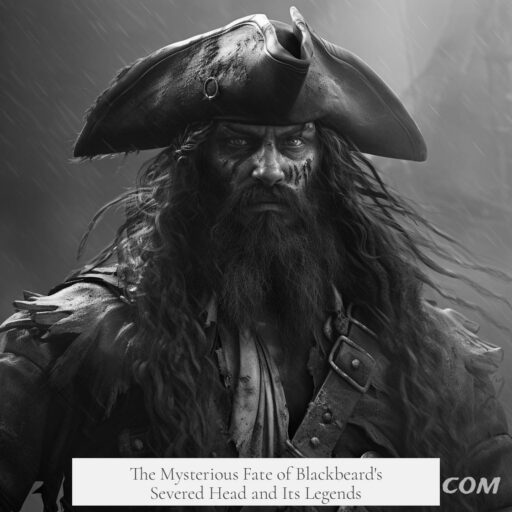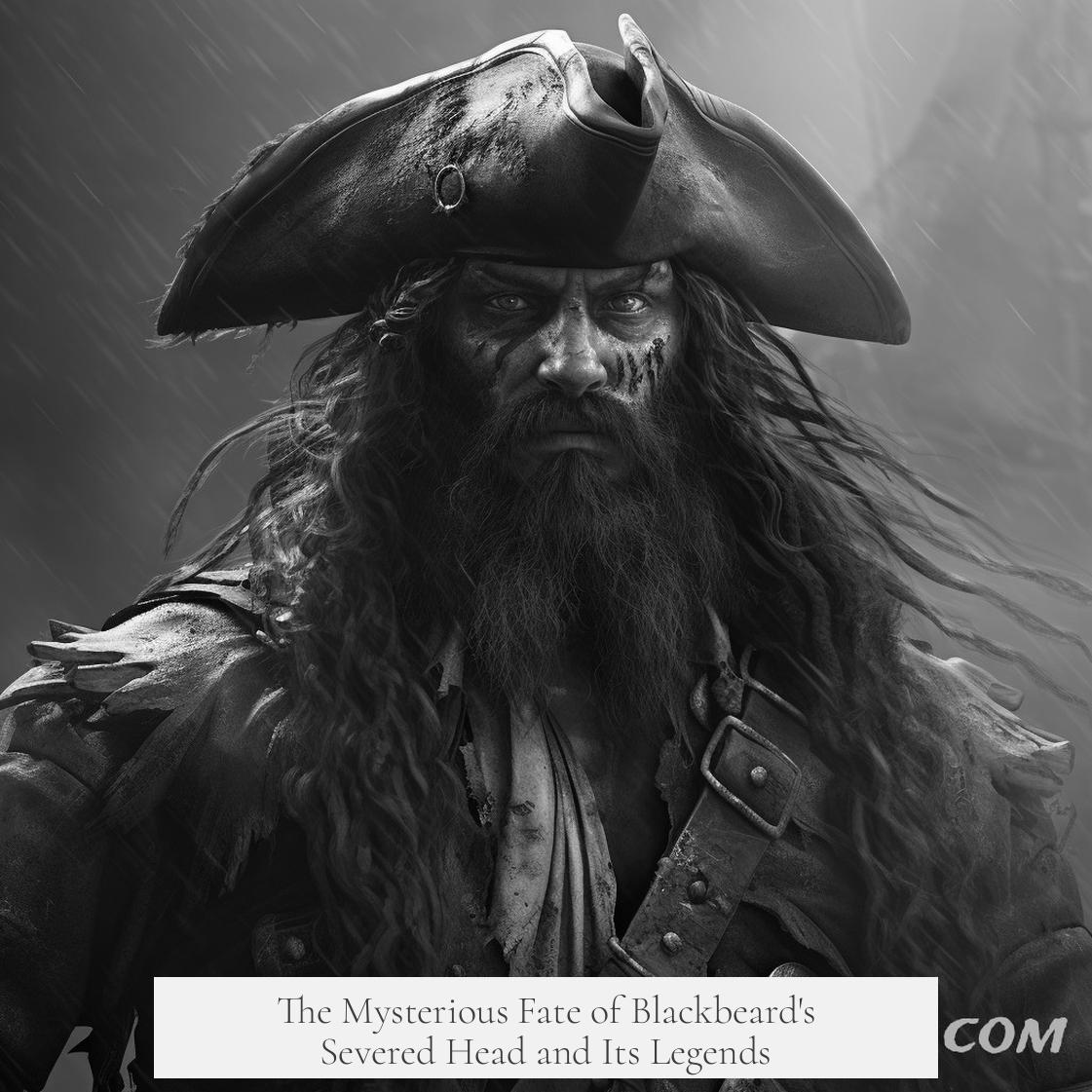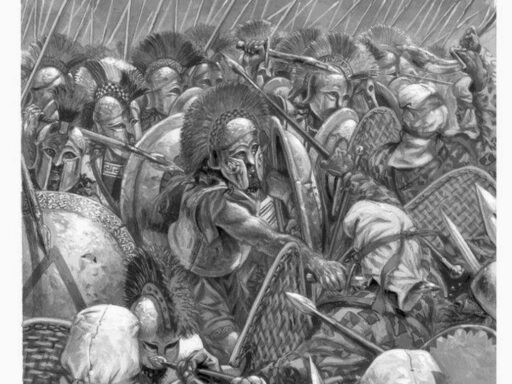The severed head of Blackbeard, the infamous pirate, was initially displayed on a pike at the entrance of the Hampton River in Virginia. It served as a grim warning to other pirates but eventually disappeared. Its fate after this public display remains uncertain and largely a subject of legend and speculation.
Historical records from London newspapers in 1719 confirm the head was mounted on a pole near Hampton. This display was intended to deter piracy in the area. However, no direct records document what happened after the head vanished from public view.
One enduring legend claims a secretive cult stole Blackbeard’s skull and turned it into a drinking vessel. Stories suggest this item was hidden beneath the Raleigh Tavern in Williamsburg. Despite extensive archaeological digs in that area, no such relic has ever been found.
The Annals of Philadelphia from 1842 mention an unsourced tale that the skull was transformed into the bottom of a silver punch bowl used at the same tavern. Later versions of this story describe the item more as a cup than a bowl, supposedly marked with the phrase “Deth to Spotswoode.” This phrase reflects old English spelling and is linked to a Freemason ritual, adding to the mystery. However, there is no concrete evidence to support these claims.
Apart from folklore, no authenticated skull or “Blackbeard’s Cup” has ever surfaced. In the 1990s, John Walker conducted a lengthy search for this alleged artifact but has not publicly reported any discoveries.
Notably, Edward Rowe Snow, a pirate historian, once donated a skull-shaped silver cup to the Peabody Essex Museum. He claimed it was Blackbeard’s head, but it was later exposed as a fake. Snow had created it from a biology class skull coated with silver paint, debunking its authenticity.
| Aspect | Details |
|---|---|
| Initial Fate | Displayed on pike at Hampton River; disappeared later. |
| Legend | Skull turned into drinking vessel; hidden under Raleigh Tavern. |
| Historical Reports | 1842 story of silver punch bowl; unverified and unsourced. |
| Authentication | No verified skull or relic found. |
| Modern Search | John Walker searched in 1990s without success. |
| Fake Artifact | Edward Rowe Snow’s silver skull made from a classroom skull. |
Blackbeard’s severed head remains one of pirate lore’s enduring mysteries. The lack of evidence after its public display means its ultimate fate is unknown. The stories about its use as a ritual cup and its hiding place continue to intrigue but remain unsupported.
- Blackbeard’s head was publicly displayed but vanished without trace.
- Legends claim the skull became a ritual drinking vessel.
- No authenticated relic or skull connected to Blackbeard exists.
- Attempts to find the skull, including John Walker’s search, yielded no results.
- Known artifacts like Edward Rowe Snow’s silver skull are confirmed fakes.
What Eventually Became of Blackbeard’s Severed Head?
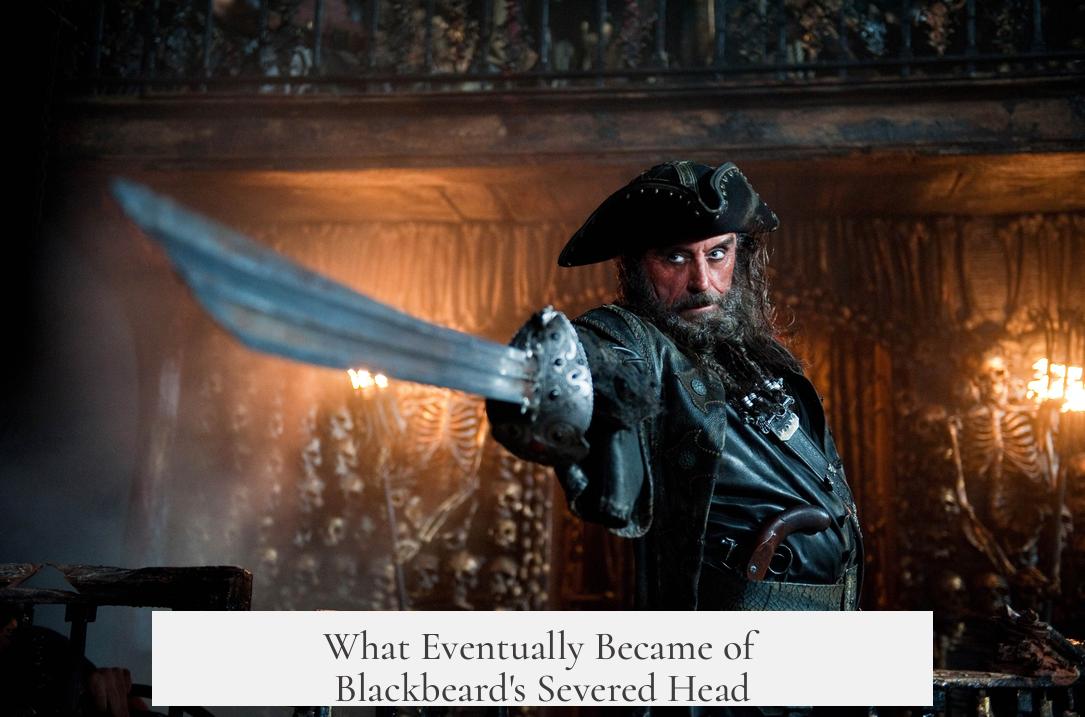
If you’re curious about what happened to the infamous pirate Blackbeard’s severed head, the simple answer is: its fate remains shrouded in mystery. After Blackbeard met his grisly end in a fierce battle in 1718, his head was taken and displayed publicly, but what happened next is a swirl of stories, legends, and some cold facts. Let’s dive into the wild, eerie, and downright fascinating journey of Blackbeard’s severed head.
You might think that such a notorious outlaw’s gruesome trophy would be carefully preserved or documented. But it turns out, the story is far less straightforward, filled with gaps, myths, and some seriously creative twists.
Initial Display and Sudden Disappearance
After Blackbeard was killed in battle, his head was, according to London newspapers from 1719, placed on a pike at the entrance of the Hampton River in Virginia. This was a common practice back then—a warning sign against piracy. Imagine walking down a riverside and spotting the pirate king’s decapitated head glaring at you from a pole. It was a brutal, visual “don’t mess with us” message.
But here’s the kicker: the head eventually vanished. No official record explains exactly *when* or *how* it disappeared. Historians suspect it was removed under cover of darkness, stolen for nefarious reasons, or simply lost to time.
We probably will never know definitively what happened to it after this public display. The idea that it just “disappeared” is oddly poetic for a pirate’s head—gone rogue one last time.
The Legend of the Drinking Vessel
Now, this is where things get, well, a bit weird. A very old story tells us that some clandestine group stole Blackbeard’s skull and turned it into a drinking cup. Not just any cup: a vessel used for rituals—of a decidedly dark nature.
The tale goes that this cursed cup is hidden beneath the Raleigh Tavern in Williamsburg, Virginia, a spot rich in colonial history and pirate lore. The rumor fuels imaginations, but the Raleigh Tavern area has been extensively excavated and searched, with no skull found.
Adding to the legend, a publication called the Annals of Philadelphia from 1842 threw out this unsourced claim: the skull formed the base of a silver punch bowl used at the Raleigh Tavern. That’s quite the party centerpiece, wouldn’t you say? But there’s no hard proof—just one historian tossing out a spicy rumor.
Blackbeard’s Cup and Freemason Rituals
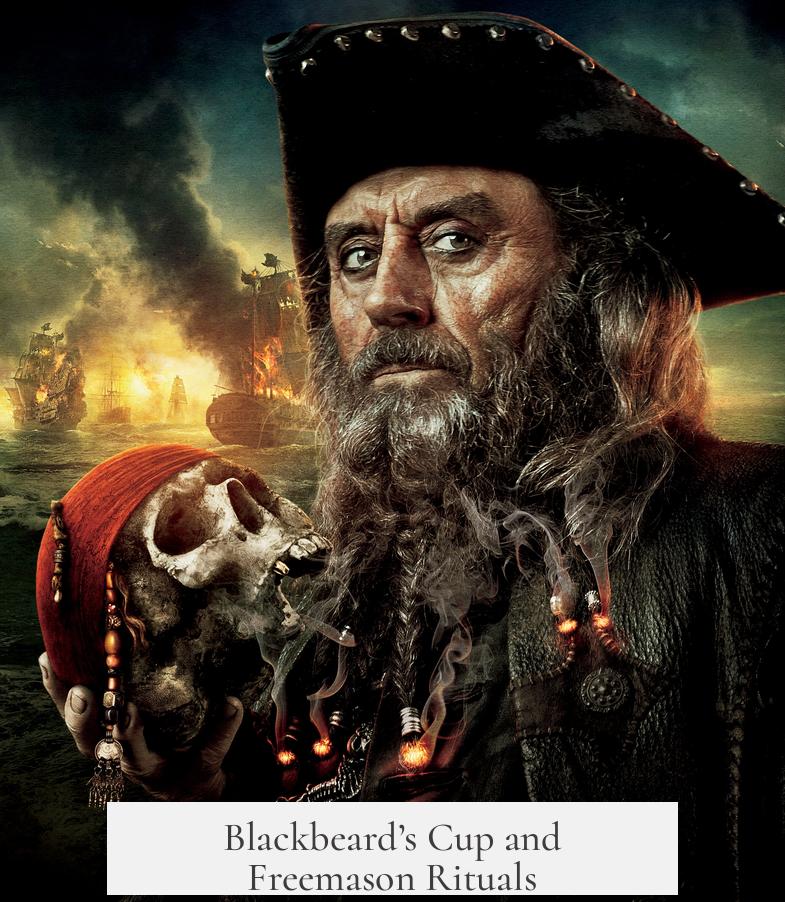
Taking the legend a notch higher, some say that the skull-cup is more than a gruesome party prop—it’s tied to Freemason rituals.
This story claims that the vessel wasn’t just a punch bowl but rather a cup bearing the inscription “Deth to Spotswoode” spelled crudely, mimicking the 18th-century English style. Spotswoode was reportedly a person Blackbeard detested, making the inscription a personal touch.
Whether Freemasons really used it for secret rites or this is just imaginative piratical fan fiction remains debated. But doesn’t the idea of a notorious pirate’s head used in secret rituals add a thrilling mystery to the tale?
The Great Missing Skull Mystery: Lack of Authentication
Here’s where reality crashes the party: despite the rumors and exciting stories, no one has ever presented the skull publicly or proven it’s authentic.
Without a verified skull, all these legends hover in that frustrating grey zone—too tantalizing to dismiss, too unverifiable to confirm.
John Walker’s Persistent Quest
In the 1990s, a dedicated treasure-hunter named John Walker started searching for Blackbeard’s skull. His quest gained some attention, but the head remained elusive.
Whether Walker is still chasing the phantom skull is unclear, but his efforts exemplify how the mystery has captured imaginations over centuries.
Edward Rowe Snow’s Silver Skull Hoax
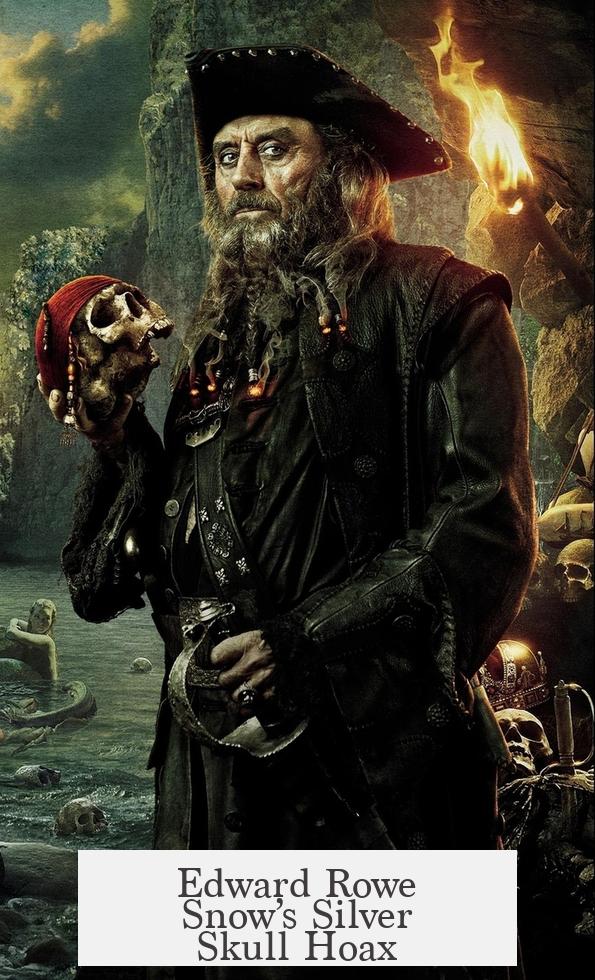
Adding a twist of irony, Edward Rowe Snow—a well-known New England writer and pirate enthusiast who donated pirate memorabilia to the Peabody Essex Museum—once claimed to own Blackbeard’s skull, fashioned into a silver cup or bowl.
But guess what? His so-called “Blackbeard’s head” turned out to be a cleverly disguised fake. Snow had taken a local biology class skull and coated it with silver radiator paint. Talk about a pirate prank worthy of a chuckle!
So, What Can We Take Away?
Here’s the deal: Blackbeard’s severed head was displayed as a grim warning but vanished without a trace. The grisly trophy sparked stories of secret cult thefts, devilish drinking vessels, and even Freemason ceremonies. Yet, concrete evidence is missing. No authenticated skull has surfaced, and while treasure hunters have searched, the mystery remains intact.
These tales highlight how pirate legends morph and multiply over time. Sometimes, the truth is less exciting than the stories spun around it. But then again, would we really rather have just a boring old skull locked away quietly?
What Lessons Can History Buffs and Curious Readers Draw?
- Legends often mix fact with fiction—always question the source and look for proof.
- The lack of evidence doesn’t kill a story; it often fuels the imagination.
- The pirate mythos thrives on mystery; Blackbeard’s vanishing head is perfect lore fuel.
- Be wary of silver-painted skulls—they might just be high-grade pirate humor.
Next time you hear about Blackbeard’s head turning into a punch bowl or used in shadowy rituals, smile and enjoy the richness of pirate folklore. The truth may be hidden forever beneath layers of history, dirt, and intrigue—as elusive and legendary as Blackbeard himself.
What happened to Blackbeard’s severed head after it was displayed?
It was placed on a pike at the Hampton River in Virginia as a warning. Over time, the head disappeared. Its ultimate fate remains unknown.
Is it true that Blackbeard’s skull was made into a drinking cup?
There is a legend saying the skull was stolen and turned into a cup used for secret rituals. Some stories place this cup at the Raleigh Tavern in Williamsburg, but no solid proof exists.
Was Blackbeard’s cup connected to Freemason rituals?
Some claims link the cup to Freemason rituals, mentioning inscriptions like “Deth to Spotswoode.” However, these stories are based on speculation without evidence.
Has anyone ever found or authenticated Blackbeard’s skull?
No verified skull has been found. The skull in Edward Rowe Snow’s collection was proven fake since it was made from a classroom skull painted silver.
Who searched for Blackbeard’s skull in modern times?
John Walker spent years in the 1990s looking for the skull. It is unclear if his search has continued or led to any discoveries.
